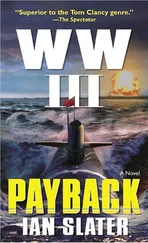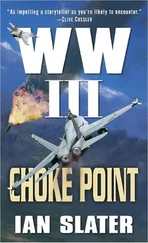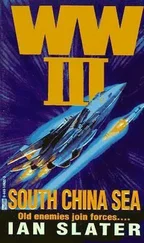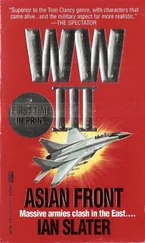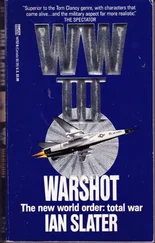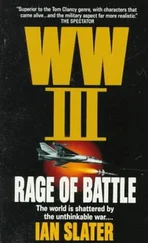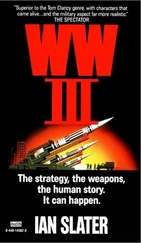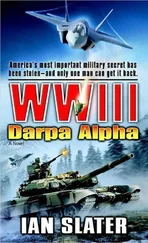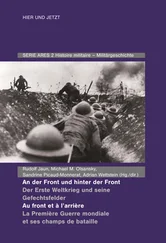They were also joining in the congratulations to those pilots who had “toggled” the laser-guided bombs, via the white cross of the TV image, smack onto their selected targets, the silent, soft white bursts of light on the videos showing the smart bombs exploding. But there had been very few secondary bursts within the initial explosions, meaning no ammunition or missile dumps.
But if the contractors were pleased, the CO of Alaskan Command wasn’t. He had lost four multimillion dollar aircraft and six air crew, two each from the downed F-111 fighter bomber and the Phantom 4-G Wild Weasel, two from the Stealth fighters. And for what? If the high-frequency Russian radar hadn’t picked them up because of the earlier jamming by the Wild Weasels, then low frequency, which had been known to work on the Stealths before, must have. In any case, what was the result? he pointedly asked the hitherto exhilarated pilots. The infrared videos showed nothing more than the cliff face splattered with black, sootlike marks and splotches like white paint, clumps of old guano that had accumulated against the sixteen-hundred-foot-high granite cliff now covered in ice and snow. Yes, the bombs had landed where they were supposed to, but there was no evidence of any real damage. Where the hell were the knocked-out ZSU quads? Never mind the absence of any real damage to the SA-10 and radar array sites.
“Probably all recessed,” proffered one of the remaining F-111 weapons officers.
“Of course they’re goddamn recessed,” said the general. “They popped up long enough to get a fix on you, fired, and then they were gone, back in their holes like a bunch of prairie dogs.”
“We must have hit a few ventilator shafts, sir — that led in from the cliff. They have to breathe.”
“Hell, Captain, they could have ventilator shafts coming in from all over that island from the western side. Island’s only three miles wide. We were firing at hot spots that the videos now show were just that — hot spots. Thermal patches, each one probably run by a goddamn flashlight battery. I don’t know how the hell they’re doing it, but we’re wasting bombs, and we’ve just shot off five million bucks worth of ordnance in five seconds to shoot down missiles from sites we can’t even see.”
“Well, sir,” continued one of the two remaining Stealth captains, “we’re just going to have to get those satellite boys in Washington to get their magnifying glasses on. Has to be somewhere we can get ordnance into that sucker.”
“Time, gentlemen,” said the general urgently. “Time! The Joint Chiefs want this one taken out in a big hurry. We don’t knock out Big Diomede, we can’t cross the strait. We don’t cross the strait, and the Siberians can move everything they’ve got to their eastern flank — fifty miles from us.” The general was studying one of the video stills. “We’ll have to go in with more infrared seekers — hope some of them can fix on RHPs.” He meant residual heat patches, which theoretically should have been identified by thermal patch imaging sights even after the periscopelike radar antennae popped back down in their holes.
“Trouble is, sir, it’s so cold, RHPs’ signatures disappear on you almost immediately.”
“I know, I know. I’ll put the word out to our chief weapons officer — see whether he can crank the infrared sensors up a notch or two.”
“I’m surprised we didn’t run into any MiGs,” said the captain in charge of the Stealths.
“Maybe they don’t have any in their eastern TVD.” He meant the Siberians’ eastern theater.
“Right,” said the Stealth captain cheekily, “and I ‘m Marilyn Monroe.”
“Then come to bed, Marilyn,” said one of the weapons officers. But no one felt like laughing. The exhilaration of the attack was wearing off with the realization that six of their buddies were no more. And in the two Stealths alone, Alaska Air Command had lost 250 million dollars of the taxpayers’ money.
One thing was for damn sure, the general told his aide after the debriefing — he wasn’t going to send any more pilots against that “hunk of rock” until he could loosen it up a bit by “other means.” By which he meant that, despite NORAD’s insistence that the attack on Ratmanov not siphon off any aircraft from the continent’s vital North American defense line, he would request that a B-1 bomber be released from its blastproof shelter six hundred feet above sea level to launch air-to-ground 86-B cruise missiles at the rock.
Firing the three-thousand-pound, two-thousand-mile-range missile outside the Siberians’ effective air-to-surface missile envelope from a distance of between forty and fifty miles would be like hitting the rock at point-blank range. If that didn’t shake a few things loose, granite fortress and all, he didn’t know what would. He could, of course, wait for more bombers to be released from Europe, but this was unlikely now that they had to contend with containing the Siberian west flank. And the air commander knew that if he couldn’t shake up Big Diomede— and quickly — knocking out its radar, AA, and no doubt its surface-to-ship missile batteries, he would have to yield the job to the navy. He was right.
The Tomcats aboard USS Salt Lake City with their 14,500 pounds of ordnance on four underfuselage points and two wing hard points were even now taking their turn as squat, bright yellow mules — tractors — positioned them ready for the four waist and bow catapults. The Alaskan air commander was too much of a professional to let petty interservice rivalry with the navy stand in the way of an operation’s success. Still…
In the backseat of the lead Tomcat, Frank Shirer’s RIO, his radar intercept officer, Walter B. Anderson, a twenty-four-year-old from Wisconsin, raised his thumb, signalling the red-jacketed ordnance men that he had seen all the red-ribboned safety pins extracted from the bomb racks. Now through the white blaze of steam-curtained light, shadows of yellow- and green-jacketed men darted about the bow and waist cats and blast deflectors — the twin, bluish white cones of the Tomcat’s Pratt and Whitney TF-30 engines going into the high scream of a forty-thousand-pound thrust. Shirer saw the yellow jacket drop, left knee on the deck, left hand tucked up behind his back, right arm fully extended. “Go!”
Shirer braced himself. There was an enormous hiss. Shirer felt himself slammed back into his seat, saw a blur of deck lights, felt a rush like a long feather pulling through his rectum, involuntarily ejaculated, and was hurled aloft at 180 miles per hour, the carrier deck a yellow postage stamp sliding away downhill into the darkness behind him.
Shirer was already feeling nostalgic for the Tomcat. After this he would be transferred to shore duty at Elmendorf, navy fighters being used to fill the NORAD gap. It would mean he’d have more opportunity to be with Lana, but he liked carriers — they kept moving. Now, however, all thoughts of Lana La Roche, nee Brentwood, her beauty, her fear of her husband, Jay La Roche, a wife-beater and psychopath all rolled into one behind the respectable exterior, had to be put aside as Shirer, leader of the twelve Tomcats, headed toward Ratmanov Island, their offset aiming point the quarter-mile-high Fairway Rock twelve miles south of their target.
* * *
Shirer’s F-14, coming in over the ice pack, led the attack, diving into the slot of the Bering Strait where the blip of Ratmanov was already on his target scope, magnified by the second. Then the Arctic night came alive with streams of red and green tracer, not shot higgledy-piggledy, Shirer noted, as in the Baghdad raids he’d been on, but carefully vectored toward the ten-plane arrowhead formation. His RIO, Anderson, reported that he had a cluster of Siberian Spoon-Rest radar masts on the eastern cliff of Ratmanov in the cross hairs of the green infrared screen. He switched on the laser designator beam and in less than a second informed Shirer they had a “lock-on”; in another second two-thousand-pound dumb bombs fitted with Paveway conversion kits, turning them into smart weapons, were sliding down the beam. At the same time six batteries of quad-mounted ZSU-23s opened up along the cliff, sending swarms of sixty-five-round-per-second, thirty-millimeter fire at the American jets. Faster eighteen-foot-long SA-10 missiles followed, the Siberian radar having got a radar fix.
Читать дальше

